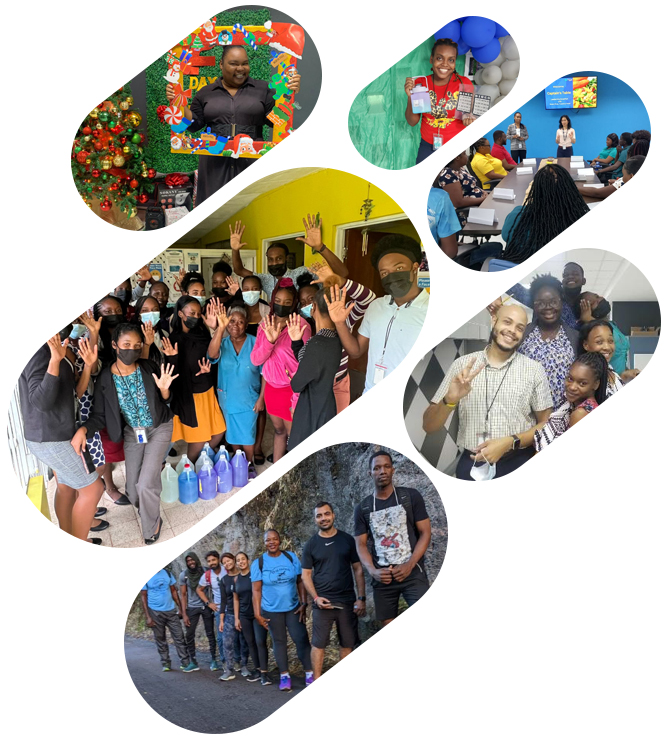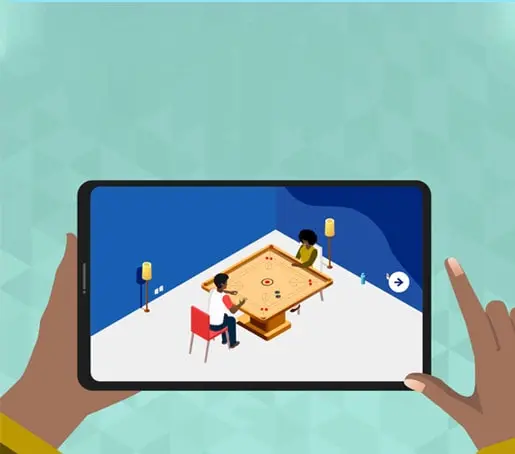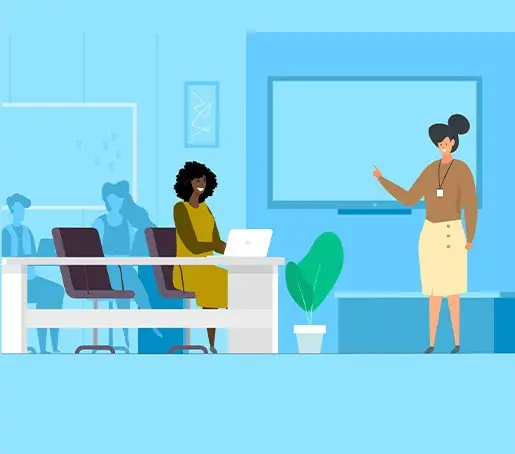
Every customer interaction can make or break your brand in today's competitive market. Whether resolving a billing issue or answering a simple query, how your team responds directly impacts customer loyalty and business success. That’s where the benefit of customer service training becomes clear — it equips your employees with the skills, confidence, and mindset needed to deliver exceptional experiences consistently.
This step-by-step guide will help you build a high-performing customer service team through structured training. From identifying skill gaps to fostering a culture of continuous improvement, you’ll learn how to turn your support staff into your brand’s strongest asset.

Why Is Customer Service Training Important?
Whether running a contact centre, managing a retail chain, or leading a healthcare support team, well-trained customer service agents are essential for success. Customer service training is not just a one-time event; it’s an ongoing process that builds knowledge, improves communication, and shapes customer perception.
A well-structured customer service training program empowers employees to handle inquiries professionally and empathetically. This directly impacts customer satisfaction, repeat business, and your brand reputation.
Ensuring every interaction is consistent, friendly, and solution-focused becomes even more crucial in high-pressure environments such as call centres. Companies that invest in training enjoy higher team morale, lower turnover, and stronger customer loyalty.
Explore: What is Customer Satisfaction

What Should a Customer Service Training Program Include?
An effective customer support training program includes both foundational skills and job-specific tools. Whether you're onboarding a new employee or refreshing an experienced team, your training plan should cover:
- Product and service knowledge: Representatives must understand what they’re supporting to explain clearly and resolve issues efficiently.
- Customer communication: This includes active listening, tone of voice, de-escalation, empathy, and clarity in written and verbal formats.
- Technology and tools: Agents should be confident using their CRM, support desk software, internal chat tools, and phone systems.
- Scenario-based training: Use real-life examples to prepare staff for handling tough calls, emotional customers, or technical glitches.
- Soft skills and emotional intelligence: Training on patience, confidence, and stress management builds trust and team resilience.
The more holistic and practical your customer care training is, the faster your team becomes high-performing and self-sufficient.
Step-by-Step Customer Service Training to Build a High-Performing Team
Step 1: Assess Training Needs and Identify Skill Gaps
Analyse your team’s strengths and weaknesses before training. Use surveys, one-on-ones, call audits, and customer feedback to spot trends—long waits, lack of empathy—and target training to address these gaps.
Step 2: Set Clear, Measurable Training Objectives
Without goals, training can feel directionless. Define what success looks like. Use KPIs like CSAT (Customer Satisfaction), FCR (First Call Resolution), and AHT (Average Handle Time) to track improvement.
Examples of smart goals include:
- “Decrease escalation rate by 20% within 3 months.”
- “Achieve 90 %+ on post-training quiz scores.”
- “Improve greeting and tone-of-voice QA score by 15%.”
Make sure team members understand the purpose of these goals and how training helps them succeed.

Step 3: Design a Blended Learning Program
Not all employees learn the same way. Combine formats such as in-person workshops, e-learning modules, live roleplays, and video-based microlearning. This customer support training approach keeps sessions engaging and maximises retention.
A modern customer service representative training approach includes role-based modules tailored to their daily workflows. Interactive content like decision trees, empathy simulations, and customer journey maps helps learners apply their skills. Quizzes are included after each module to reinforce learning.
How to Make Training Inclusive and Culturally Relevant
In diverse environments like Jamaica or other multilingual regions, customer service training must reflect the cultural nuances of your customer base. Language tone, body language, and even customer expectations vary across demographics. Failing to train your team on these differences can result in misunderstandings and lost trust.
Include case studies or call scenarios based on real local customer behaviours. Use multilingual examples when necessary. Encourage agents to share cultural experiences that can help others improve empathy. This is particularly effective in call centre training, where team members may handle international queries or accents.
Inclusivity also means making learning accessible to all learners. Consider visual aids, audio content, or slower-paced learning options for team members with varying educational or technological backgrounds.
Step 4: Leverage Technology to Enhance Training
Use technology to your advantage. A Learning Management System (LMS) makes tracking course progress easier, sending reminders, and delivering content.
Gamified elements—such as digital badges, level progression, and leaderboards—can increase engagement. Chatbots and AI-driven modules also teach soft skills via simulated conversations.

Step 5: Provide Continuous Feedback and Coaching
Training shouldn’t end after onboarding. Deliver real-time coaching based on live calls, screen recordings, or chat transcripts. Encourage peer mentoring, daily debriefs, and open discussion of customer feedback.
Tools like speech analytics and call scoring sheets help identify coaching opportunities. A feedback culture where agents feel safe to grow will lead to long-term improvement.
Step 6: Foster a Customer-Centric Culture
A great culture supports excellent training. Recognise and reward behaviours that align with customer-first values. Hold weekly shout-outs, customer compliment sessions, or internal award systems.
Encourage agents to see customer experience as their responsibility, not just a job metric. Culture eats process for breakfast, so even the best training fails without a shared mindset.
Step 7: Monitor Progress and Provide Ongoing Support
Use performance dashboards to track progress post-training. Compare metrics like QA scores, resolution rates, and escalations before and after the program.
Schedule quarterly refresher workshops or optional skill tracks for those seeking growth. Provide access to e-learning libraries and monthly knowledge-sharing sessions.
High-performing teams don’t just learn once — they learn continuously.
How to Empower Agents Through Ownership
Excellent training doesn’t just build skills — it builds accountability. Encourage agents to take ownership of their development by co-creating personal learning plans. This can include:
- Choosing a focus area every quarter
- Setting individual improvement goals
- Volunteering to mentor new hires or lead peer-learning circles
Empowered employees are more likely to retain information, apply it confidently, and contribute positively to company culture.
You can further encourage ownership by involving agents in post-training evaluations. Ask what helped most, what was unclear, and how they’d improve the training. This creates a two-way learning relationship.
Real-World Examples of Effective Customer Service Training
At HGS, we’ve seen fundamental transformation through step-by-step training. For example:
- In a telecom project, complaint escalations dropped by 32% within 2 months after introducing daily role-play huddles and empathy drills.
- A banking client adopted blended learning with coaching pods and a real-time QA dashboard. Within 3 months, their CSAT score jumped from 77% to 91%.
- In our Jamaica delivery centre, continuous call centre training helped reduce AHT by 40 seconds and improved agent engagement scores by 22%.
The takeaway: Customer service training programs tailored to business needs yield results, not just in metrics, but in customer smiles.
What Are Common Challenges in Customer Service Training?
Practical customer service training for employees builds confidence and consistency, translating into exceptional customer experiences. Training a customer service team comes with real-world challenges, but the right strategies can overcome them.
- High turnover: Frequent hiring means you’re constantly training someone new. Use modular, repeatable content and train-the-trainer approaches.
- Time constraints: Teams are often too busy for long sessions. Break learning into 15-minute microlearning bursts.
- Engagement fatigue: Training can feel boring if it’s all theory. Add gamification, leaderboards, and genuine call reviews to keep interest high.
- Manager buy-in: Without leadership support, training may lack traction. Make ROI visible by tying learning to KPI gains.
By tackling these issues head-on, you ensure your customer service training programs lead to fundamental performance improvements.
How to Align Training With Business Goals
One mistake some organisations make is separating training from business performance. Training shouldn’t happen in a silo. It should be tightly aligned with broader company goals such as increasing retention, reducing complaints, or entering new markets.
Before designing any training, ask:
- What specific business outcome are we targeting?
- What does success look like from a customer’s perspective?
- How will training help close the performance gap?
For instance, if your customer satisfaction scores are dropping, focus on empathy, de-escalation, and soft skills. If call handling times are too long, train on product knowledge, system shortcuts, and structured conversations.
Training aligned with outcomes is easier to measure and more likely to receive executive buy-in and funding.
Conclusion
Investing in customer service training is one of the smartest moves a business can make. A well-prepared team doesn’t just resolve queries — they create loyal, satisfied customers who keep returning.
By following this step-by-step guide — from identifying skill gaps to reinforcing long-term learning — you’ll build a skilled customer service team that contributes directly to business growth and brand strength.
Read next: Building a career in customer service.
View roles: Customer service jobs in Jamaica
Interested in joining the journey? Explore exciting customer service roles at HGS Jamaica.
Frequently Asked Questions (FAQs)
What industries benefit most from customer service training?
Industries like telecommunications, retail, banking, insurance, and healthcare benefit significantly — they rely heavily on front-line teams to maintain trust and customer loyalty.
What are the signs that customer service training needs improvement?
Indicators include low CSAT scores, repeated escalations, inconsistent quality, or negative survey feedback.
How do I measure ROI from customer service training?
Track performance metrics like resolution rates, call quality, customer satisfaction, and team productivity before and after training.
Can customer service training improve team productivity?
Absolutely. With clear guidelines, better tools, and coaching, teams handle more interactions with greater confidence and accuracy, enhancing speed and service quality.
 Jamaica
Jamaica Canada
Canada Colombia
Colombia India
India Philippines
Philippines UK
UK US
US SA
SA



